Pemmican Recipe: How to Make Pemmican
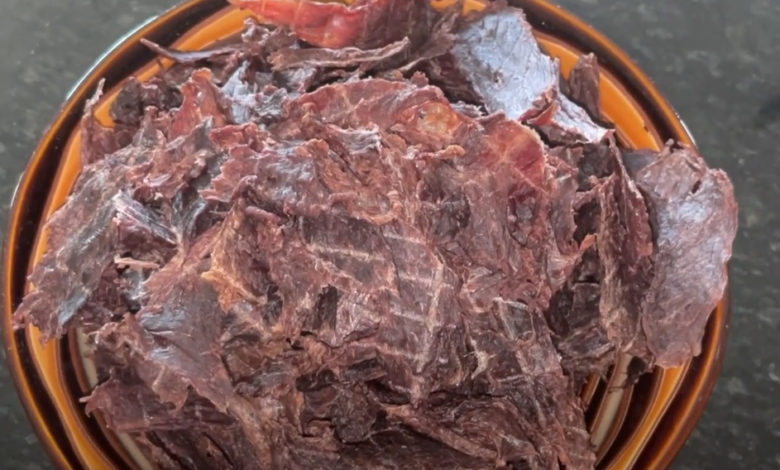
What if I tell you that the concept of superfoods is nothing new? There is a superfood that the Native American tribes used for centuries. As the fur trade industry grew in the late 18th century, this “bread of the wilderness” was adapted by the traders and the Arctic explorers.
This would be pemmican, which was nature’s original protein bar.
Even though the process of meat preservation has changed with the advent of refrigeration, this traditional dish remains an excellent survival food. Whether you’re a hunter, prepper, or homesteader, pemmican is a food that will check all the right boxes for a shelf stable source of protein.
Wondering how to make pemmican? We will discuss the pemmican recipe in-depth.
Rather watch a video on how to make Pemmican? Learn how in this episode of DECIVILIZED!
What is Pemmican?
Pemmican is a dried brick of concentrated fat and protein. The meat is dried using solar heat or pit smoke. The dried meat is pounded to a powder by using rocks and mixed with hot, melted fat.
The mixture is given a specific shape and stored, mostly in sewn ski bags. The ingenious method of preservation uses fat as the preservative. While the preparation of pemmican takes some time, it mostly involves cutting and drying the ingredients. The actual process of cooking takes only a few minutes.
The energy density of pemmican is super high – it can contain as much as 3,500 calories per pound. Some records suggest that the meat and fat from a healthy bison could generate 90 pounds of pemmican.
Once prepared, the pemmican can be eaten like dried beef. It can also be cooked like a sausage, or used to prepare a soup. Some also add dried berries, wild fruits, and sugar to pemmican. You can make your own mix by using different meat types and berries.
How to Make Pemmican
Homemade pemmican preparation requires the right balance of lean meat and fat. You can use an oven, a stovetop, or a slow cooker for preparing pemmican. Backcountry survivalist Laura Zerra suggests that since rendering the fat takes a long time, using a slow cooker is a good idea.
Ingredients/Equipment
- Dried strips of meat
- Animal fat, rendered down to a liquid
- Dried berries ( if needed)
- Dried seasonings of your choosing
- A food dehydrator
- A food processor
- A coffee grinder
Process
1. To start, choose the type of meat you want to use. You can mix fat from one animal with the meat from a different animal. If you are adding other ingredients, pick the berries you want to add.
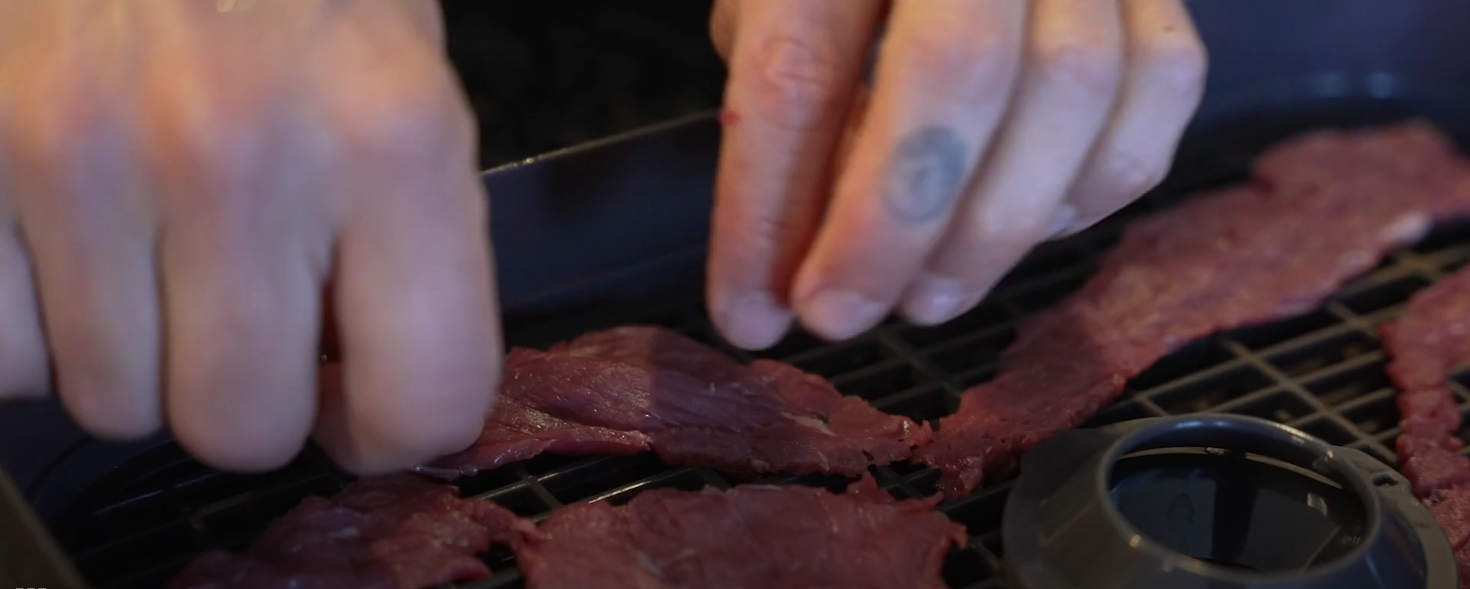
2. Cut the meat into thin slices- around ¼” thick- and the berries into small pieces. Dry them out in the dehydrator. Set the dehydrator at around 170-180 degrees and dehydrate for 3.5 to 4 hours. The meat pieces should be dry enough to snap in half like chips and the berries should turn crunchy. If you are picking berries from the wild, you can dry them under the sun as well.
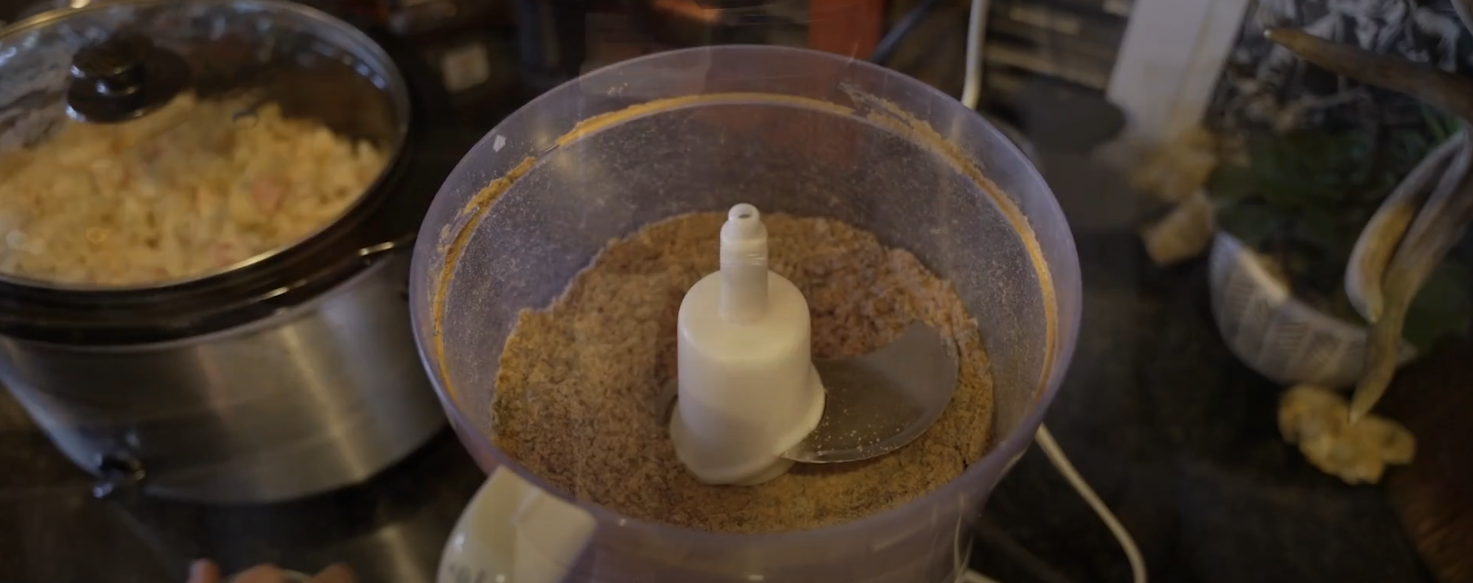
3. After the meat is dry, put it in the food processor to generate a fine powder. Once the berries are dry, you can use the coffee grinder to grind them into a powder. Make sure that there are no large chunks in the mixture. The finer the powder, the less fat you will need. Mix the two powders in a bowl.
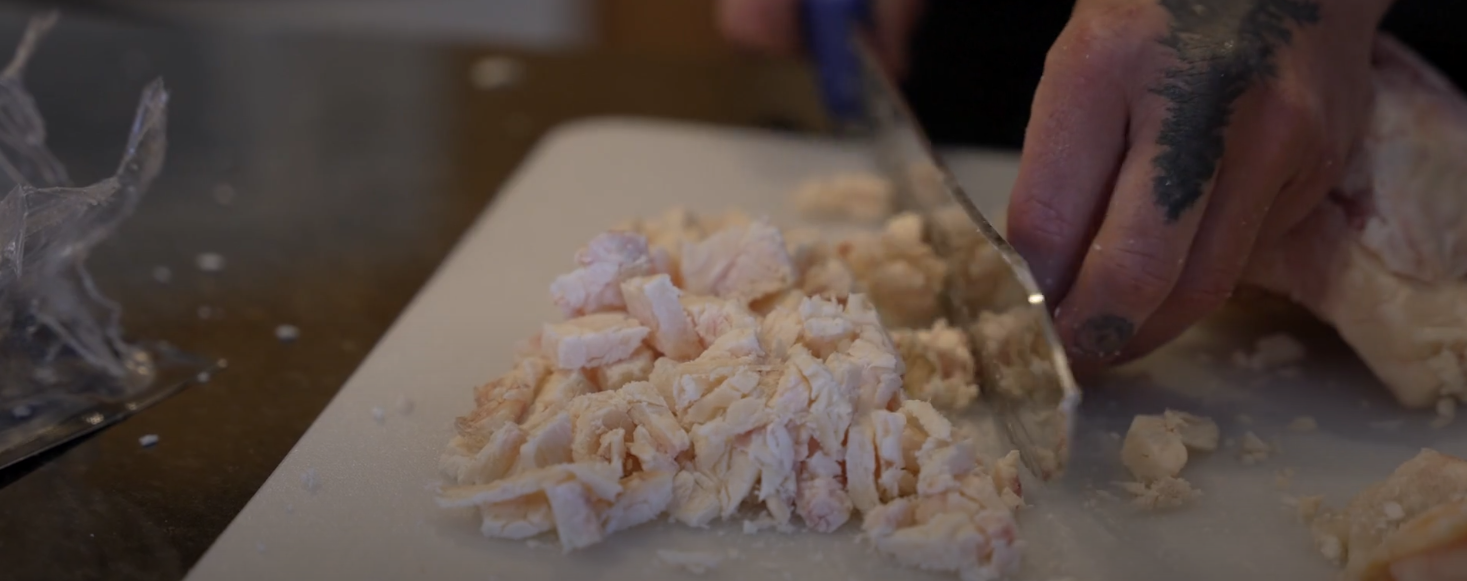
4. To render the fat, dice it into small pieces and ensure that it is free from any meat residues. Add a cup of water to the fat to prevent the bottom layer from getting burned. Set the cooker to high for 20-30 minutes to allow the fat to melt. Keep an eye on it and stir it at regular intervals as it sizzles.
5. When the fat turns to darken, turn the cooker setting to low. Now, strain the fat to remove the liquid. Put the molten fat back in the cooker and reheat. Make sure that the liquid is free from solids.
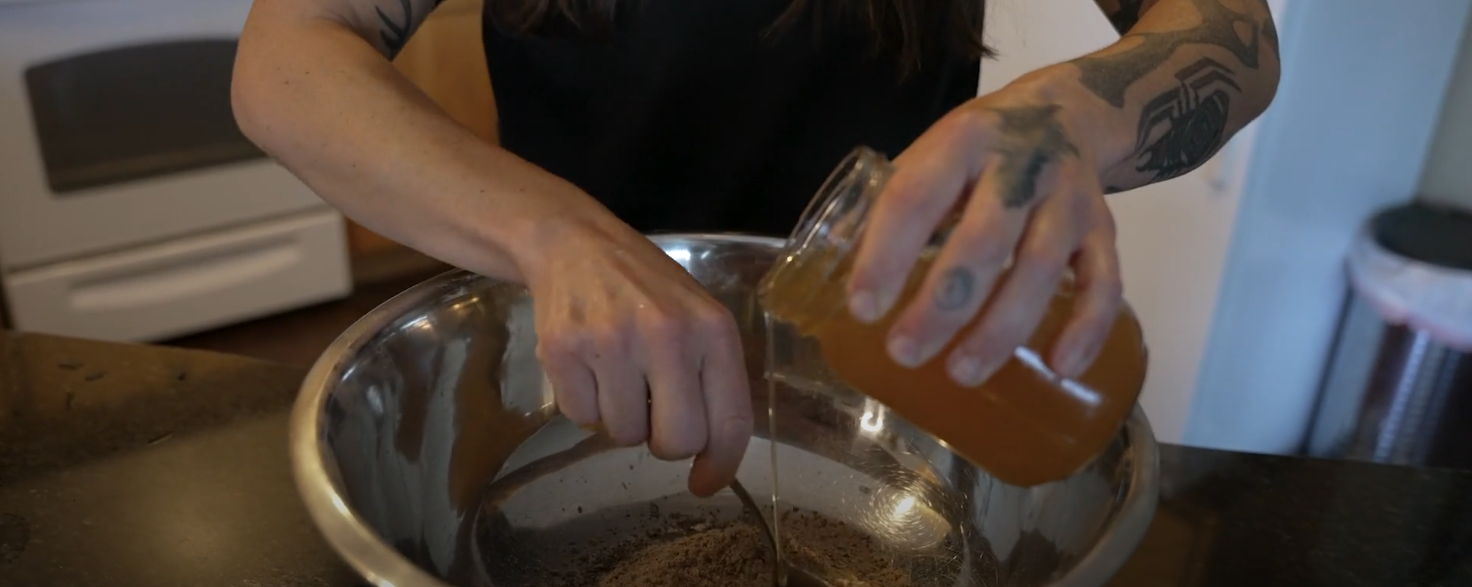
6. The next step is to mix the fat and the powder in a large bowl. For this, ensure that they are in equal parts by weight. Keep the liquid fat warm to prevent it from congealing. Make sure to mix the fat uniformly with the powder.
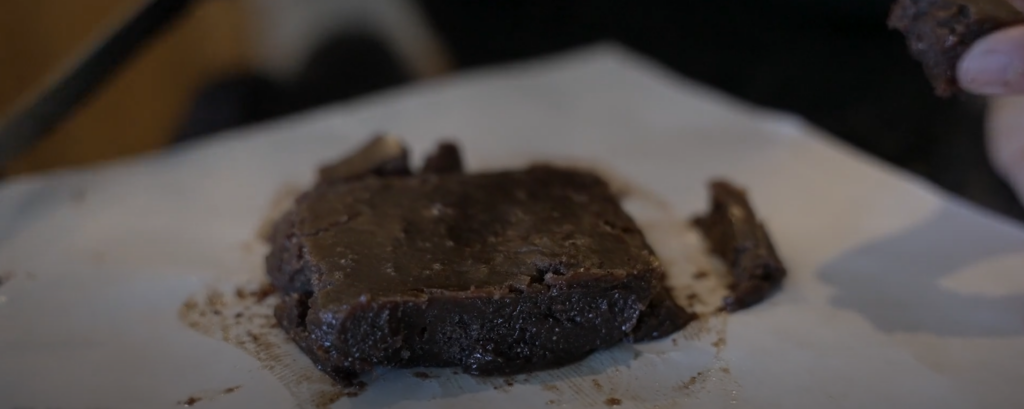
7. Once the mix is ready, you can pour it into a cookie sheet or a cake pan. If it is too hot, refrigerate for cooling. Once it hardens, you can get creative with the shapes.
Notes
- Since moisture is the biggest problem with homemade pemmican, store it in a cool and dry spot. Extra moisture can lead to the growth of bacteria and spoil the contents. Make sure to store it right to prevent moisture exposure.
- Always prepare the meat before the rendering of the fat is done. That way, you will not have to melt the fat again.
- Since the density of the fat and meat differs, measure them by weight and not by volume.
- You can use raw honey or dried powdered honey to add some sweetness to the pemmican.
- A 1:1 mixture of meat and fat can be too fatty for your taste. In that case, reduce the fat percentage to 1:3, or even lower to 1:5. The best way is to play around with a few batches and find out the percentages that best suit your palate.
- Adding more ingredients generally reduces the shelf life of the pemmican. If you are an outdoor enthusiast and plan to use it as outdoor food, you will probably end up consuming it quickly. So, you can mix other ingredients. But, if you are planning to use it as survival food, long-term storage is the priority. In that case, keeping the additives to a minimum is the best choice.
Best Pemmican Ingredients
Here are a few quick tips for choosing the best pemmican recipe ingredients.
Meat
It is best to pick lean meat with a low fat content. For me, game meat like bison, elk, venison, moose, or caribou are the best options. Note that pheasant, turkey, or grouse meat does not work well as they are too lean. Also, avoid rabbit or fish meat as they contain less protein.
Berries
It is best to dry fruits like blueberries, blackberries, and cranberries for the pemmican. Dried fruits available on the market may contain salt, oils, and other preservatives. So they are not the best options.
Seasonings
You can add some salt, which should be around 0.75 percent of the total mixture by weight. Some prefer adding small quantities of black pepper. Less is more as it can overpower the natural flavor of the meat. Other items like garlic powder, onion powder, and paprika, can be added in small quantities based on your preference. I have added minced dried mango to the mix to make the pemmican more spicy.
Fats
Since the cow or sheep fat will likely have the highest saturated fat content, it will retain shape more effectively. Laura suggests using grass-fed beef tallow as the fat generated from pork has a shorter shelf life.
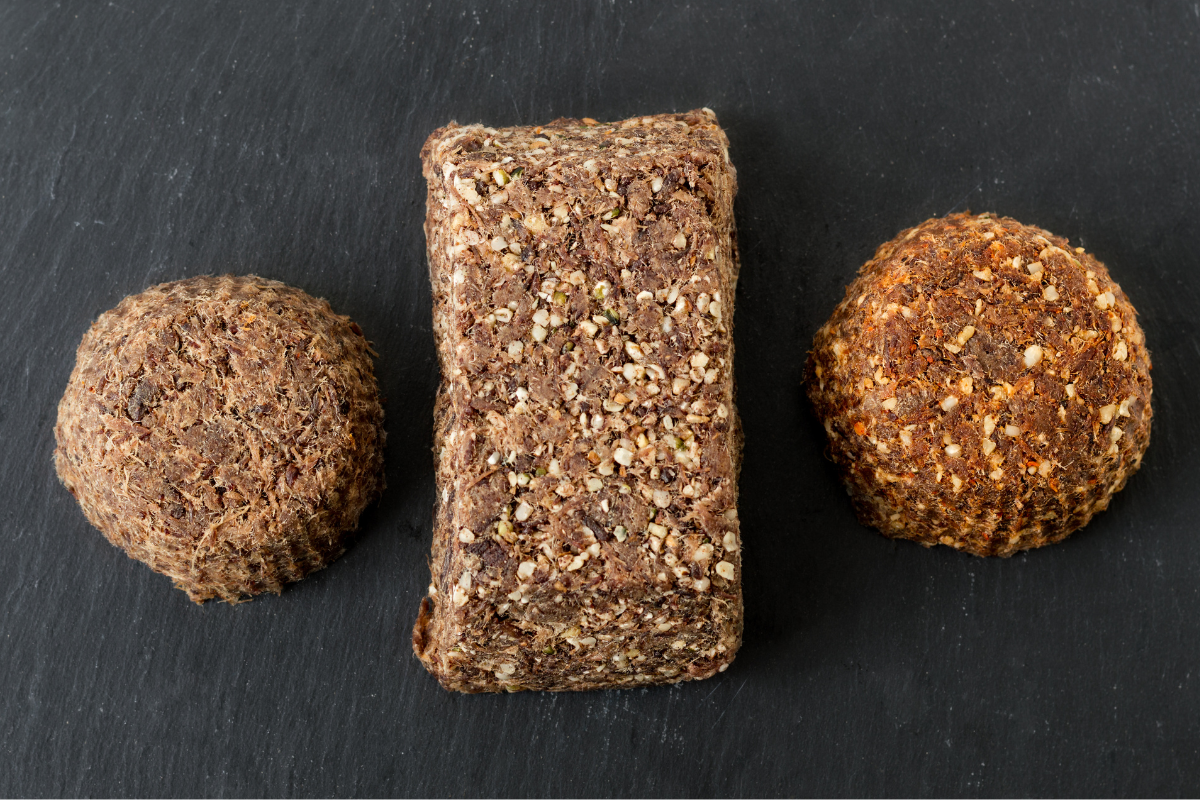
Understanding the History of Pemmican
The term “pemmican” originates from the Cree word “pimikan” meaning “manufactured grease”. Since the native Americans lived along with bison herds, bison meat was the primary ingredient. The first documentation of this recipe goes back to 1743 and it was a simple, low-tech process.
Pemmican was a staple diet of the fur traders and Alaskan and polar explorers because of its high energy density. Trading posts along the Assiniboine River, Red River, and North Saskatchewan River acquired large stocks of pemmican from the native people.
Norwegian Explorer Fridtjof Nansen wrote about pemmican being the major part of the diet during his Arctic Circle expeditions. In the 1920s, pemmican was promoted as a high-energy go-to travel food for the military by Arctic Explorer Vilhjalmur Stefansson.
Some reports suggest that the rising popularity and trade of pemmican was one reason that almost resulted in the near-extinction of the North American bison. Thousands of bison were slaughtered to prepare pemmican, resulting in a steep decline in their numbers.
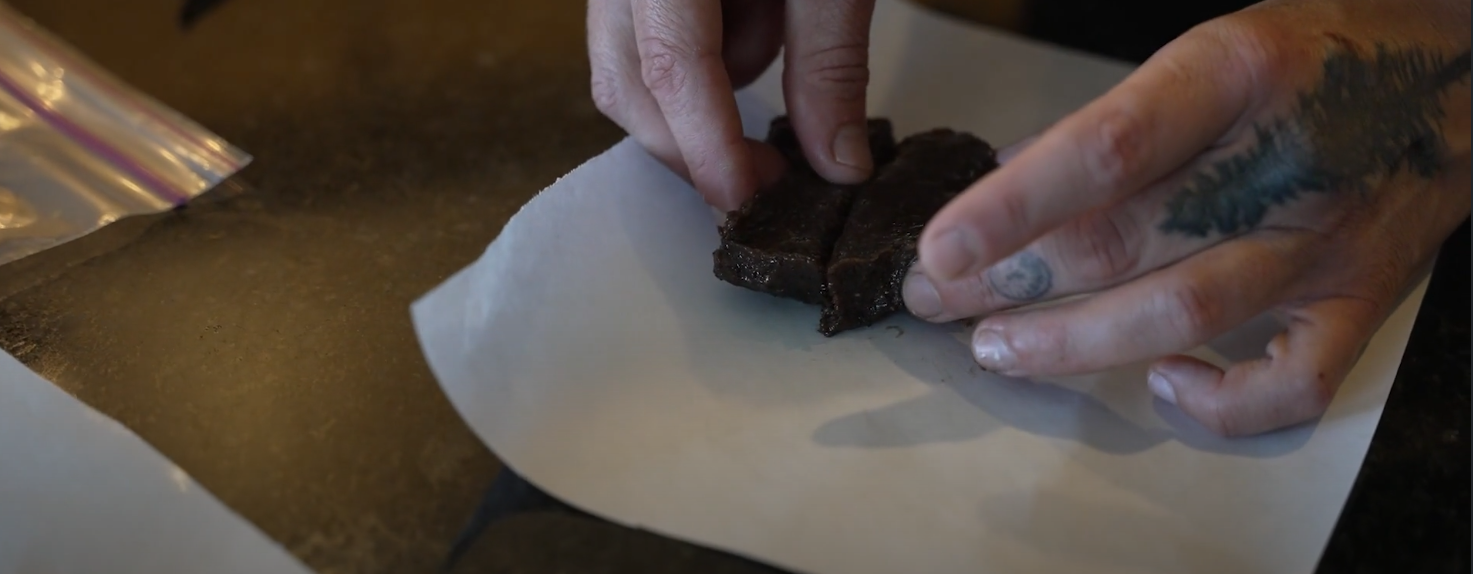
Is Pemmican Healthy?
So, what else does this superhero food deliver other than the protein punch?
Quite a lot actually. When prepared from grass-fed animals, pemmican contains healthy fats including omega-3 fatty acids, along with vitamins and minerals. These include vitamin B12, vitamin E, iron, and zinc.
Anyone who has been on the trail for weeks knows that trail nutrition is one thing you need to take seriously. Parameters like calorie count and pack weight have to be balanced carefully for each trip.
Pemmican fits the buzzword “nutritionally dense” perfectly for such purposes. Besides, it keeps you full for long hours. The high protein content makes it a great post-workout bar as well.
Granted, it does not have a high carbohydrate content and is not an instant energy supplier. But being rich in protein and fats, it will supply you with a steady flow of energy throughout the day. The addition of fruits and berries can increase the carb content to some extent.
And remember: It is important to eat pemmican right. Since it is super concentrated, the initial feeling can be that you have eaten less. If you are not used to it, take it easy.
Besides, you will need to drink some water with pemmican as it is dry. But do not over consume water as it will dilute the stomach acids needed for breaking down the dense protein.
How Long Does Pemmican Last?
In terms of shelf life, pemmican is hard to beat. When prepared in the right way, pemmican can last anywhere between 3 to 5 years, or even more if kept away from moisture. In a freezer, it can last as long as 20 years!
Look for dry spots with low light conditions. If you are not refrigerating it, the cellar or pantry are the best places to store pemmican. Vacuum sealing is a good option too. If you are planning to freeze it, normal freezer bags should be good enough.

